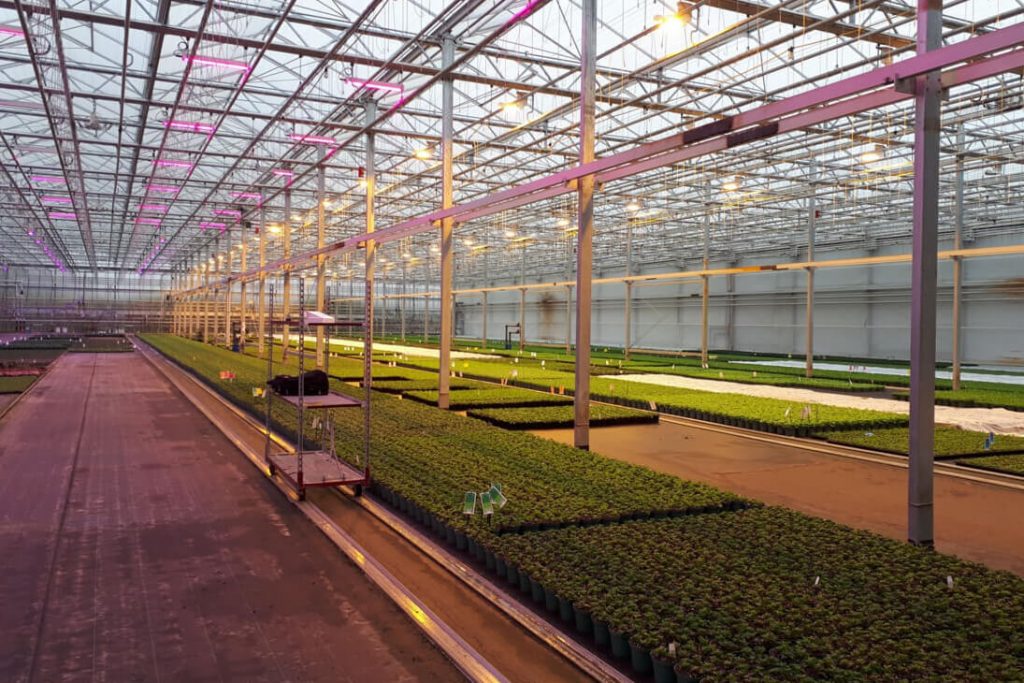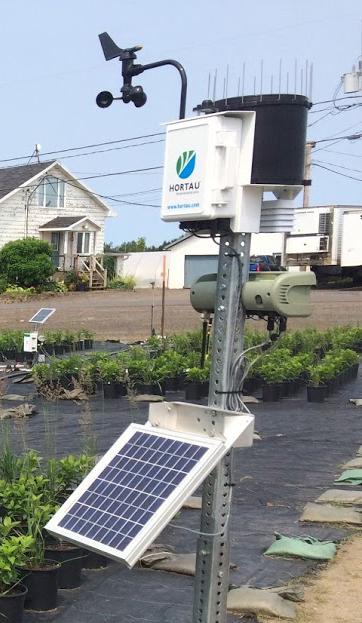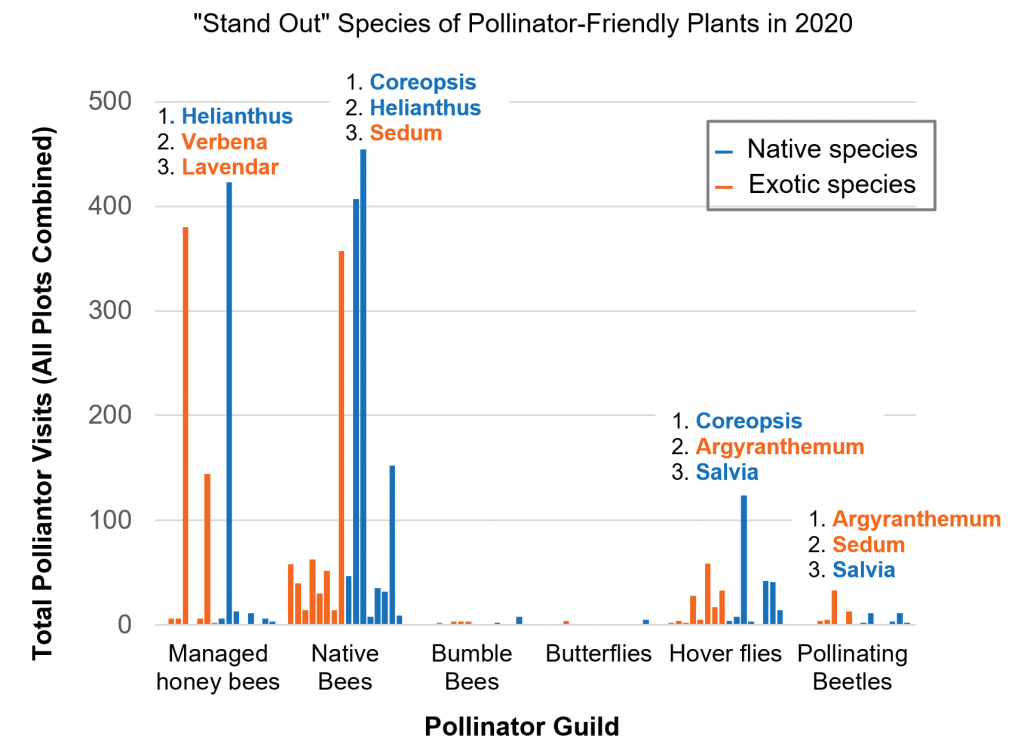With over 20 years of research and extension services dedicated to helping both floriculture greenhouse growers and nursery producers to address their many production issues, the University of Guelph’s Dr. Youbin Zheng is well-known to growers in the ornamental horticulture sector. With a focus on plant production in controlled environments, over the years, Dr. Zheng’s research has addressed a broad and diverse range of production issues on behalf of growers across Canada.
If there can be a single common theme to describe Dr. Zheng’s many varied research initiatives, it would be best described as a quest to find sustainable, environmentally acceptable solutions to tackle present-day production issues. On behalf of the outdoor nursery plant sector, Dr. Zheng’s work has dealt with a diversity of issues, ranging from best fertilization practices to water quality improvement and irrigation practices. On behalf of the floriculture greenhouse sector, past projects have focused on growing media, fertilization, and irrigation technologies, with his current attention turning to the challenges associated with the recent trend to LED lighting, in addition to rootzone management strategies.
According to Dr. Zheng, just as important as the need for ongoing research to meet current production challenges is the ability to successfully transfer research knowledge to individual growers within a time frame that is appropriate for them. It is a task, he says, that begins with awareness, and he sees it as a responsibility of himself and the University of Guelph research team to use a broad range of measures to create that awareness.

Dr. Youbin Zheng
University of Guelph

Campanula stock plants grown under static LED vs dynamic LEDs (Right).
“There are many variables that will determine a grower’s need or decision to implement new production practices based on research results. Sometimes, research will result in recommendations such as modifications to fertilization practices, that are easy to adopt immediately. But often, our research results may necessitate complex or expensive upgrades which a grower is not able to implement immediately.”
It is Dr. Zheng’s quest to make growers aware that their first step to adopting new or improved techniques to their growing operations can be as simple as a call to himself. He is quick to point out that he is only a part of a larger knowledge base, and it is his role to coordinate that knowledge base for the purpose of effective knowledge transfer.
“Researchers don’t just conduct research projects, they are part of a complex information network,” says Dr. Zheng. “Besides our own research projects, we have the opportunity to attend international science conferences, providing us with access to the latest in scientific theories and research findings which all become part of our knowledge base.
“Also, an equally important component of most research projects is the opportunity to train what is known in the trade as HQPs, or highly qualified personnel. After graduation, many of these people are employed by the industry or perhaps other research institutions, but they almost always tend to stay in touch with the University. They too become important contributors to our knowledge base.”
Although a variety of venues are available to researchers to disseminate research results, Dr. Zheng notes that face-to-face opportunities are generally the most effective. He is almost always on the agenda of the Canadian Greenhouse Conference, and over the years has addressed the nursery grower sector at provincial association conferences across the country. He does not find it unusual to receive phone calls up to five years later, with conversations starting with a query such as “Remember that talk about water quality you gave at the BC CanWest conference a few years ago?” “That’s usually all it takes for me to be able to forward to them the research information they’re looking for,” says Dr. Zheng. “Conducting research is a relatively straightforward process that ideally results in a new set of data within a predetermined time frame. It is not nearly as easy to define or predict how and when there will be uptake of those results by growers.”
Dr. Zheng’s current research project “Use of LEDs to improve ornamental crop production” which is specifically designed to work in close consultation with the floriculture sector typifies his research philosophy.
For more than 10 years, greenhouse growers have been transitioning away from High Pressure Sodium (HPS) lighting in favour of LED lighting. While this new technology has proven to be both economical and environmentally friendly, the real motivation for this transition, according to Dr. Zheng, has been the substantial crop production benefits of LED lighting. The transition to LED lighting has been well-supported by the international research community, but there continue to be many knowledge gaps which have limited the widespread uptake of this technology by greenhouse growers.
Once gaps are identified, research typically starts at the University’s facilities where basic parameters can be established. They are then tested at the commercial greenhouse level, first on a trial basis and eventually expanded throughout the entire production facility.
According to Dr. Zheng, the real benefit of LED lighting is the ability to control the available colour spectrum. Simply stated, different plant species respond differently to various light regimens at certain stages of their growing cycle, so the question becomes, how do you use the light spectrum most effectively to meet their specific needs and growing requirements. As an example, different combinations of blue and red light will have an impact of photosynthesis and overall plant height. This variability is why we see such an abundance of LED lighting research around the world. It is also why final results and implementation will vary from grower to grower.

Growth chamber used to test plants response to different LED light spectra.
“The objectives of our lighting project are clearly stated and straightforward. They include the impact of light quality on seed germination and performance and understanding how light quality can be manipulated to optimize cutting uniformity of stock plants. But there is a great deal of variability from grower to grower. Our real measure of success as a research team is having available reliable data which we can then help growers to adapt to their own specific growing operation.”
At the conclusion of his current research project, Dr. Zheng will add the following outcomes to his already extensive knowledge base on behalf of ornamental greenhouse growers:
- Knowledge on whether we can, and how to use light to improve seed germination and seedling propagation for various ornamental crops in controlled environments.
- Recommendations on lighting recipes for growing stock plants for the purposes of improving quality of cuttings and ease of harvesting.
- Provide guidance on under what circumstances current commonly used HPS lamps can be replaced by LEDs to save energy and improve plant performance in greenhouse ornamental production.
- Recommendations on how to use lower intensity, end of day light quality treatments to control morphology and flowering in ornamentals.
- Knowledge on whether we can, and how to use pre-finishing light treatments for improving plant robustness during shipping and at retail environments.
The project Use of LEDs to improve ornamental crop production is part of the “Accelerating Green Plant Innovation for Environmental and Economic Benefit” Cluster and is funded by the Canadian Ornamental Horticulture Alliance (COHA-ACHO), private sector companies, and the Government of Canada under the Canadian Agricultural Partnership’s AgriScience Program, a federal, provincial, territorial initiative.


 Français
Français





























 Communication Materials on the Latest Research
Communication Materials on the Latest Research